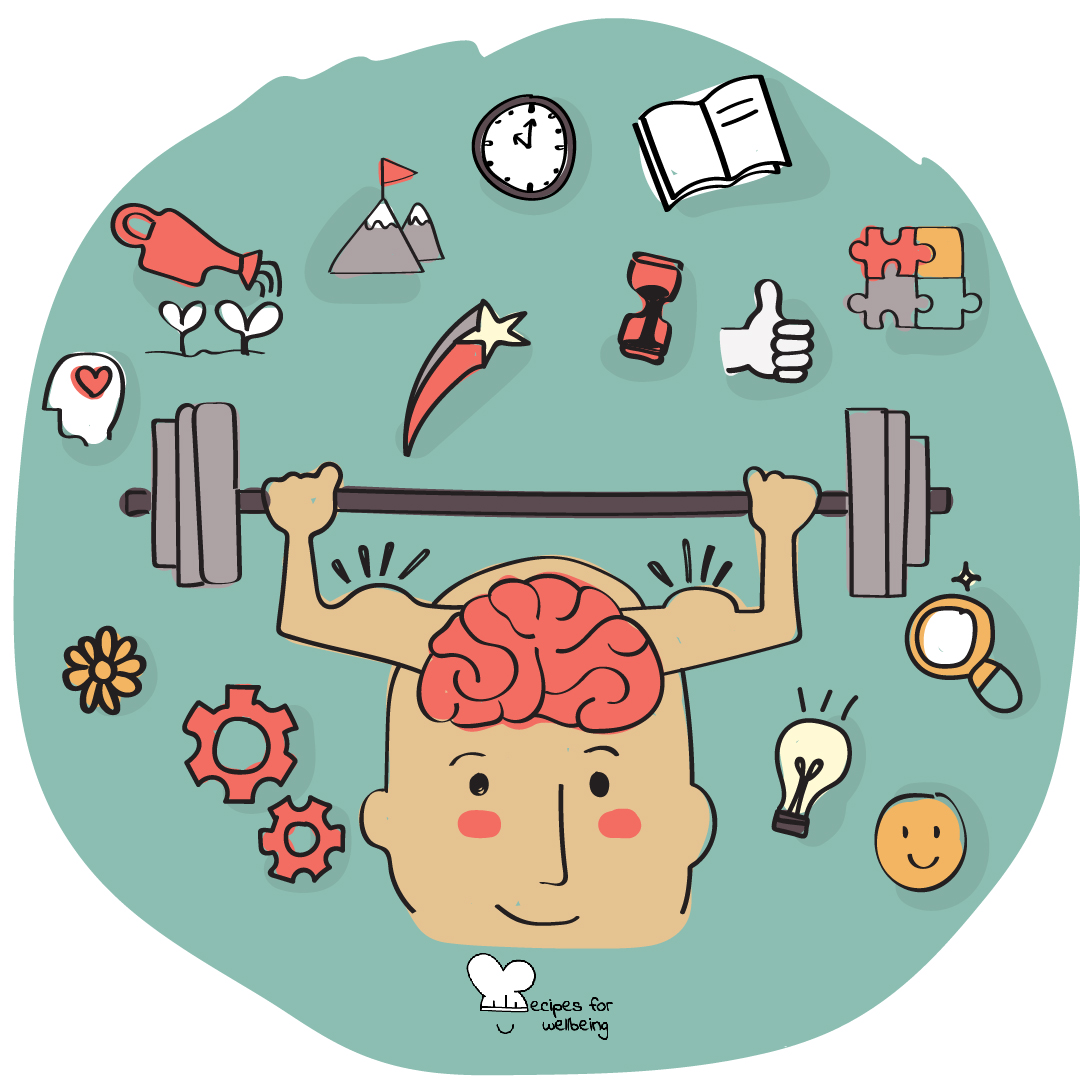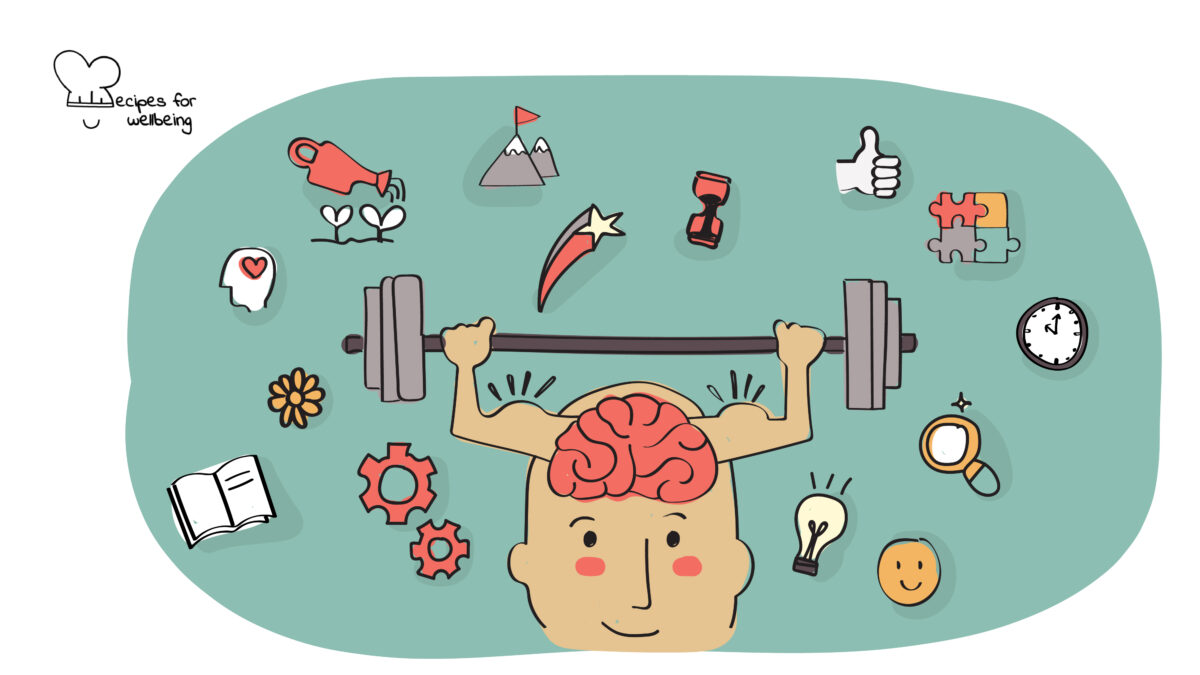
Recognising brain strengths
Our brains renew themselves throughout life to an extent previously thought not possible. ―Michael S. Gazzaniga
👥 Serves: 11-25 people, 2-10 people, 26-40 people
🎚 Difficulty: Easy
⏳ Total time: 31-60 minutes
🥣 Ingredients: If meeting online: A shared online communication platform, a group of people / your team, an online collaboration platform (see step 1). If meeting in person: a space where you won’t be disturbed, a flipchart, 1 marker per participant (see step 1).
🤓 Wholebeing Domains: Community, Digital Consciousness, Liberatory Learning, Positive Emotion, Radical Care
💪 Wholebeing Skills: Acknowledgement, Celebration, Challenging, Curiosity, Digital relating, Diversity, Multiperspectivity, Reflection, Reframing

Recognising brain strengths
📝 Description
A tool to map and celebrate different brain qualities.
Contrary to earlier beliefs that the human brain (especially the adult brain) is a nonrenewable organ, advances in the field of neuroscience and neuropsychology demonstrate that our brains can rewire themselves. This ability of neural networks to change is referred to as “neuroplasticity”, “neural plasticity”, or “brain plasticity”. Factors that impact neuroplasticity include psychological stress, environmental influences, but also your attitudes and behaviours. Yes, as we explore in our recipe “Hardwiring happiness”, you can rewire your brain to be happy.
This recipe focuses on building up your brain strengths to enhance positive neuroplasticity. It is also a great tool to map the brain strengths of a group (or a team!) and celebrate different brain strengths in different people. This activity has been inspired by the work of Lana Jelenjev at the Neurodiversity Education Academy.
👣 Steps
Step 1 – Preparation (30’ prior)
Before meeting your group/team, spend a bit of time to think of the best format to present the various brain strengths to facilitate the group mapping. For instance:
- Are you meeting online? Consider setting up a whiteboard (using Jamboard, Mural, Miro, or similar) or a survey (Menti, SurveyMonkey, Typeform, or similar) that people can easily fill in.
- Are you meeting in person? Consider preparing a flipchart with the brain strengths and have markers that people can use to write their names on the flipchart.
Step 2 – Framing (5’)
At the start of your meeting, spend a few minutes to frame the importance and relevance of doing this activity for your specific group/team. For instance, you could frame it as a tool to recognise the superpowers in your team that are not always acknowledged or appreciated. You could also frame it as a tool to recognise the uniqueness of different brains, thus increasing acceptance of neurodivergent people in your group.
Step 3 – Mapping (10’)
At this point, invite people to read through the 20 brain strengths (there are more!) and add their name to the ones they recognise themselves with.
- Artistic • A fascination with artistic explorations and expressions either through images, movements, or sounds.
- Candour • A preference for honesty and sincerity. You are frank when expressing yourself and your ideas.
- Creativity • An ability to easily find new ways of doing things. You make use of the 3 networks of the brain: default network – related to brainstorming and daydreaming, executive control network – activated when you need to focus, and salience network – known for detecting environmental stimuli.
- Curiosity • An intrinsic motivation to acquire new information (epistemic curiosity), a fascination with how other people think, feel, and act (social curiosity), and an ability to read sensory information around you (perceptual curiosity).
- Detail oriented • An ability to identify slight differences between similar cues. You like looking at the specifics and pointing out small details.
- Empathizer • You have the ability to recognise what another person is thinking or feeling, and can easily respond to their state of mind with an appropriate emotion.
- Global thinker • An ability to shift perspective and view an object or event from multiple angles. You can also take a “bird-eye” view and zoom out of the situation to see the bigger picture.
- Humour • A natural flair for the comic side of life. You have a knack for understanding others and making connections.
- Hyperfocused • An ability to deeply focus and pay attention to what you are doing. You can easily access a state of flow.
- Imaginative • An ability to look beyond what is visible. You combine feeling and thinking to envision new possibilities.
- Justice sensitivity • A high sense of fairness and justice. You are not easily swayed by sentiments and emotions, rather approach the situation rationally.
- Lateral thinkers • An ability to think out of the box, opting for new approaches or discovering new connections. You can easily bring information and resources from different sources together.
- Narrative reasoning • A tendency to remember facts as experiences, examples, or stories, rather than abstractions. You have a clear and vivid memory of personal experiences.
- Novelty • A drive to do new things and take part in new experiences. You are motivated by new sensations and variations in experiences.
- Organiser • An ability to plan and organise actions and activities for both short- and long-term goals. You are great at self-monitoring and self-evaluation.
- Spontaneity • A tendency to jump in new ideas and thoughts. Your mind likes to wander and follow spontaneous thoughts which helps you be creative, innovative, and action-oriented.
- Systemizer • A drive to analyse or build rule-based systems. You systemize based on regularities (structure) and rules.
- Tenacity • An ability to sustain interest and effort towards your goals over periods of time. You withstand challenges and setbacks and persevere towards your goals.
- Visual-spatial • An ability to understand and analyse shapes of objects or their spatial features (e.g. size, location, orientation).
- Vitality • A feeling of mental and physical energy. You feel strong and active.
Step 4 – Reflection (15’–45’)
Depending on your group/team dynamics, you may want to first split into small groups and invite people to share experiences and observations before convening as a large group to make sense of the activity. Here are a few prompts to guide the reflection and sense-making process:
- What recent experiences can you think of where you activated a particular brain strength (or saw someone in this team doing that)?
- What are the most/least popular brain strengths in this group and what might they say about our group/team culture?
- How might certain brain strengths lead to tension if not channelled properly?
- How can we use this mapping to benefit our group/team culture, collaboration, and impact?

